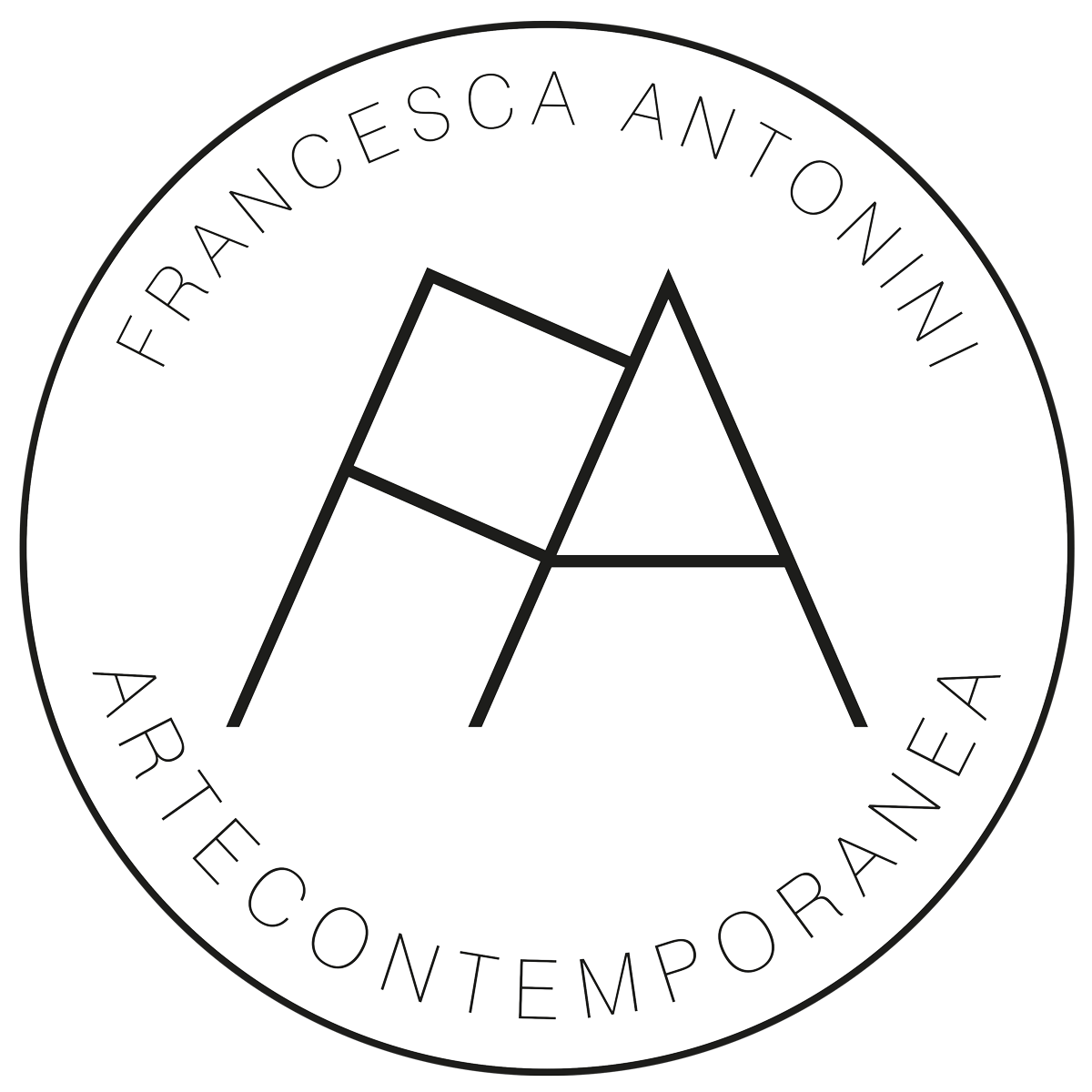IL CONFINE DEL MONDO ABITATO
OXANA TREGUBOVA
OPENING THURSday 17 OCTOBEr 2024
UNTIL SATURDAY 11 JANUARY 2025
IL CONFINE DEL MONDO ABITATO
EDOARDO MONTI
The roots of Oxana Tregubova's (Russia, 1990) research are closely related to the phenomenon of the icon, its formal solutions and their content. She is interested in the expressive power of monochromatic or colored tonal backgrounds and their form. Taken together, they constitute conventional spaces that become more real than reality, since they do not try to imitate it and create an illusion of it, but constitute a new, self-sufficient one, recalling the authentic one and revealing its nature, while remaining independent.
“Il confine del mondo abitato”, the artist's first solo exhibition at the gallery, presents a series of new works: oil, acrylic, ink and collage dialogue with canvas or paper supports, accompanying us into Oxana's romantically restless universe.
I like to devote part of the text to the technique and construction method of the works in the exhibition. Just as in cooking the list of ingredients and the recipe anticipate the execution details and critical comments, so for Oxana the description of the production steps is propaedeutic to understanding and appreciating the content they convey.
A few dozen meters from Italy, in her new Swiss studio in Chiasso, there are several tanks with old layers of oil paints that are now dry. This is where the process of making canvases and papers begins, floated in oily and colored solutions, diluted and made more fluid by turpentine. Spontaneous forms are born, partially out of control, which are transferred to the porous cotton material and are then fixed with transparent chalk, thus turning themselves into a blank canvas on which the artist spreads the first color, black. Oxana sculpts the background of the canvas with a layer of acrylic, which lays the foundation for the creation of one of the planes of the final frame, researching and creating shapes and sizes. The use of inks adds further depth, as in a collage that layers space and image. Later, photocopied fragments of books and magazines are cut out and transferred to the canvas; removing the paper with the help of water, negative images are imprinted. The artist gives life to a visual metaphor: like a poet who sees in the wheat fields the hair of a girl moved by the wind, so the artist materializes this image, giving consistency to considerations and analogies. Again, the stones that adorn a pond are made from cutouts of photographs of Earth from an airplane; the petals of a flower are enriched by existing images of which all trace has been lost. The technique was strongly influenced by the marble inlays seen in Florence, where she lived for eight years, and by “‘paesine’ stones”, limestone and clay formations that conceal within them motifs resembling landscapes and city skylines. The last gesture, delicate but powerful, involves the application of a velvety deep absolute black, whose properties are similar to those of Vantablack: the background takes on the role of incipit and conclusion of the pictorial act, generating three-dimensionality and creating a third visual plane.
Some works feature figurative elements, others depict plants. The characters merge with nature: one is lost in the fields, another dives into water, others embrace a rock and sleep in contact with the earth. Details are finished with an airbrush, using inks, acrylic and oil. These works are framed, as if to recall Man's restrained relationship with nature; works depicting nature remain unframed, allowing stems and petals to expand to the edges of the canvases themselves. The whiteness of the human figures evokes universality and a sculptural quality, recalling the purity of limestone. The artist, who has worked with marble in the past, celebrates the act of sculpture, reminding us that sculpting is nothing more than drawing with light. Skin color is removed, charging the form with other senses, represented instead in its purity.
Oxana explores the dualism between control and randomness. Chaos and abstraction emerge in the initial stages, but are then brought back to a precise form. This interplay between chance and intentionality creates a unique dynamic: at the macroscopic level a compound order prevails; at the microscopic level we perceive abandonment to eventuality.
The title of the exhibition is taken from the poem “Worpswede” by Rainer Maria Rilke, and reflects the artist's concern for the current historical period. For the past two years, the artist has been trying to understand her own position in relation to the destruction that is taking place in the world. Her response is to cultivate gardens, oppose destruction by creating beauty and bringing positive values. “Il confine del mondo abitato” represents the risk of losing everything; however, even in the deepest blackness there is still the possibility that a flower will grow, that man will continue to care for Nature, and for his own inner nature. At the same time, black gives depth to the figures, without which they would lose dimension. This gaze toward the horizon recalls the infinite, allowing us to reflect on ourself, and showing how art can never be totally clear or definitive.



























